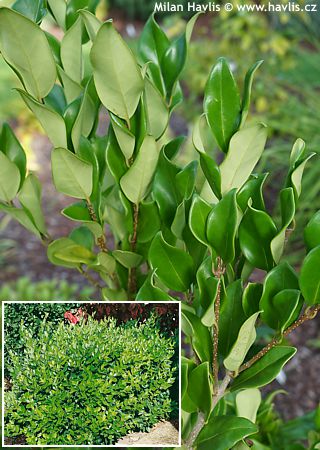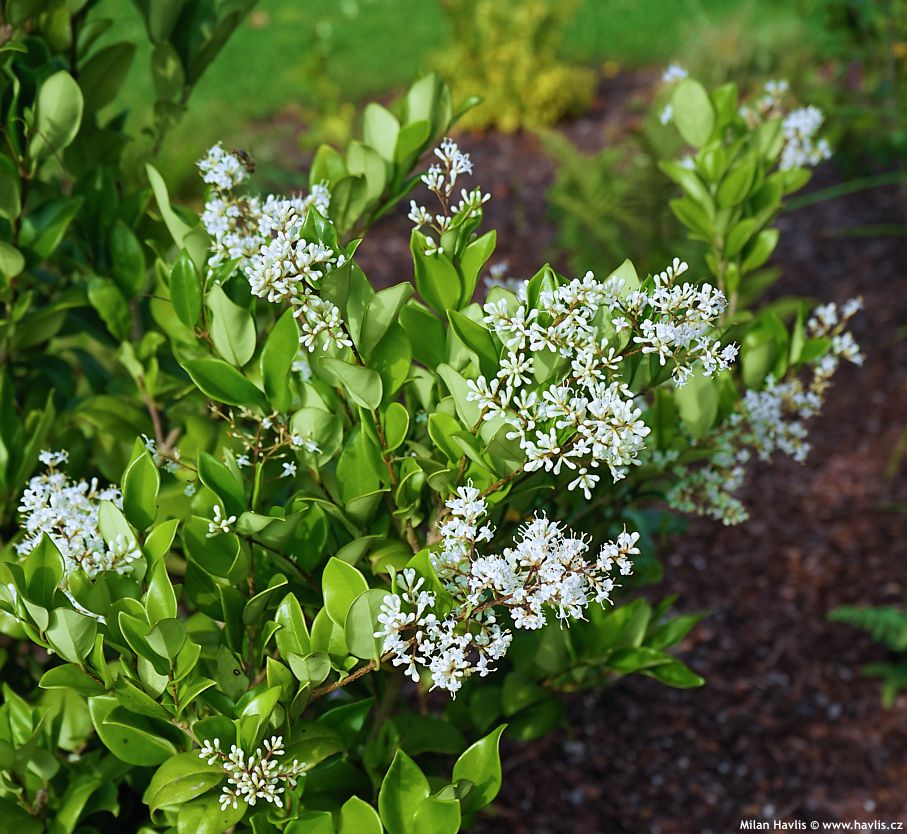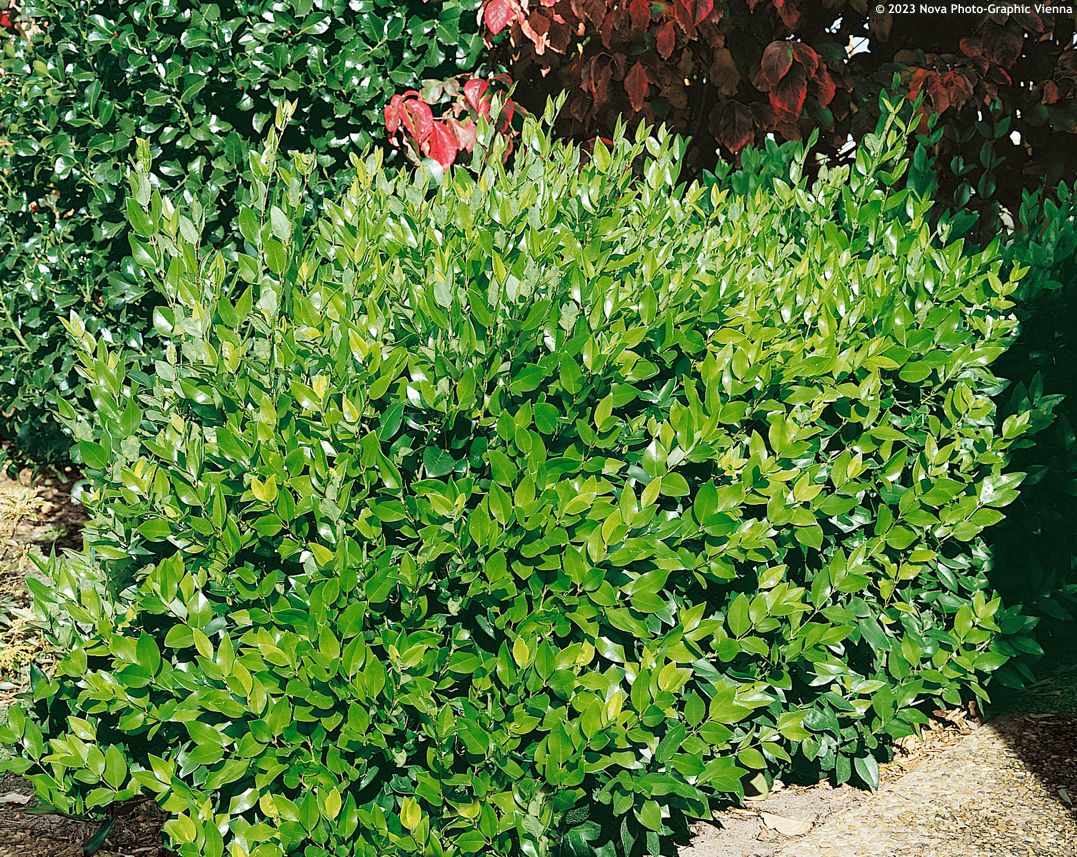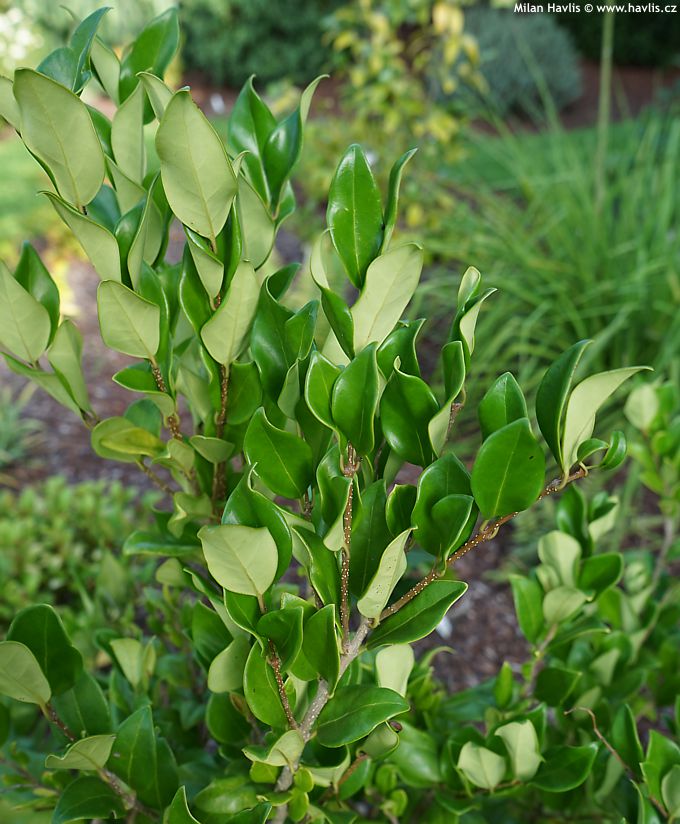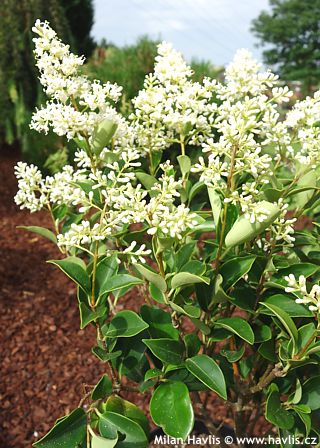Ligustrum japonicum 'TEXANUM' Japanese privet, waxleaf privet
Ligustrum
Privets are deciduous, semi-evergreen, or evergreen shrubs from all continents but America. They are commonly fast growing and dense which makes them ideal for screening and hedging. However, there are a few exceptionally beautiful species or varieties which deserve to be planted as specimens. Japanese privet is too tender to grow reliably in USDA zone 6, we recommend growing it in zone 7 and higher.
Texanum is a highly attractive variety of Japanese privet, also called waxleaf privet. Its evergreen leaves are leathery, narrowly ovate, 4-6 cm long, bright green and glossy above, pale green and matte on the reverse. In mid-summer appears a quantity of about 10 cm long, terminal panicles composed of small, creamy, fragrant flowers. They are followed by blue-black berries, mildly toxic to humans but loved by the birds.
It grows slowly to moderately fast (20-30 cm per year) into an elegantly ruffled shrub with densely leaved branches, forming a V shape. If you don't like its natural habit, you can prune it in any way, preferably in spring after all frosts or after flowering. You can use it as an unusual evergreen specimen plant in a small garden, in a border with other shrubs of different shapes and colours, and it is obviously a beautiful hedging plant.
Evergreen privets prefer acidic to neutral soil with enough nutrients for best leaf color. They love growing in full sun or only light shade, in deep shade they bloom less and lose their shape. The soil must be well-drained as their roots will die in clay or compacted ground. Once established, they cope well with long-term drought and are highly heat resistant. Texanum waxleaf privet has been tested and proved reliable down to -18 °C without any protection, and further trials are ongoing. We recommend mulching in winter.
Last update 21-03-2023

4 352 Kč

4 352 Kč
Goods are shipped all over Europe. For Russia and U.K. and for further details please read about SHIPPING OPTIONS HERE.
Are you interested in a serious discount for orders NOV-FEB? Check your options here.
THE PRICES INCLUDE VAT of 15%. For quick conversion you can use 1 CZK = approx. 0.04 EUR
- STANDARD QUALITY - Plants of this group are 1st class quality with number of branches and overall density adequate to their size and age, considering they were container grown.
- DE LUXE QUALITY - This label guarantees a luxurious quality of manually selected plants that, compared to their height and age, are exceptionally dense and beautiful.
- EXTRA - These plants are usually mature and bigger specimens with exceptional overall appearance.
- STANDARD (as described in the plant form) means a tree with a trunk of 190-210 cm and a crown at the top, unless specified differently. The commercial size for trees is their girth measured in the height of 1m from ground.
- HOBBY - These plants are of the same quality as our standard-quality plants but younger and therefore cheaper.
- SHRUB - a woody plant with branches growing bushy from the ground level.
- HALF-STANDARD or MINI-STANDARD - a small tree with shorter trunk, its size is usually specified.
- FEATHERED - These are trees with branches growing already from the base of the trunk and up along the stem.
- GRASSES and PERENNIALS - Sizes given usually read the diameter of the pot or the clump, as specified.

































